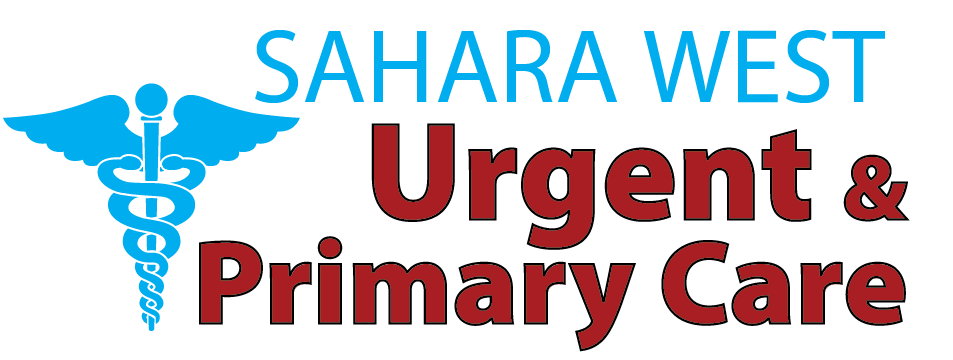SUD is a chronic mental disorder of the brain that is characterized by the inability to stop taking substances in spite of their detrimental consequences. It interferes with behavior, health and every-day functioning. The strength of SUD differs with usage rate, loss of control and not restraining even after adverse effects. SUD is a million-affecting disorder that puts a strain on healthcare systems across the world and is diagnosed according to the criteria in the Diagnostic and Statistical Manual of Mental Disorders (DSM.-5).
This article plunges into the depth of SUD- its symptoms, causes, diagnosis, treatment options, prognosis and prevention to provide the readers with information, as well as the strategies of action.
What Is Substance Use Disorder?
Substance Use Disorder is characterized by a recurrent use of intoxicants, i.e., alcohol or prescription and illegal drugs, which cause a high level of impairment as a result. In contrast to casual Substance Abuse Treatment, SUD is characterized by habitual dependence, tolerance (required more), and withdrawal symptoms, and also by using it even after harming social relationships, work or health. It is known as a health issue that needs complex treatment and care.
Public Health Impact
SUD causes death, overdose, mental health crises, lost productivity and pressure on the community. Based on recent statistics, millions of people have a problem with alcohol or drug use but a lot of patients never get assisted with the problem. The discrepancy between the affected and the ones receiving care highlights the importance of creating awareness, early diagnosis and good treatment interventions.
Types of Substance Use Disorders
Alcohol Use Disorder
SUD causes death, overdose, mental health crises, lost productivity and pressure on the community. Based on recent statistics, millions of people have a problem with alcohol or drug use but a lot of patients never get assisted with the problem. The discrepancy between the affected and the ones receiving care highlights the importance of creating awareness, early diagnosis and good treatment interventions.
Opioid Use Disorder
Opioid dependency is established quite quickly, regardless of it being produced by prescription pain relievers (ex. oxycodone) or heroin. There are symptoms of drowsiness, slowing breathing, and intense withdrawal, which are considered very risky to accidentally overdose and relapse.
Stimulant & Other Substance Use Disorders
Addiction may also be caused by drugs such as cocaine, methamphetamine, nicotine, benzodiazepines, and sedatives. These two types of drugs, although with opposite effects stimulators energetic and benzodiazepines sedative, are similar in the processes of development of dependence and physical harm to health.
Symptoms and Warning Signs
Behavioral Symptoms
Be aware of poor control (taking more than intended), making substance use more important than engaging in the commitments, withdrawal, and engaging in high-risk behaviors, such as driving under influence. The individuals affected by SUD keep their use secret or even give a false story.
Physical and Psychological Signs
Find changes in weight, bad hygiene, tremors, slurred speech, insomnia, anxiety, irritability, depression, mood swings. The nature of these symptoms depends on the substance, amount of use and the health of the person.
Early vs Advanced Indicators
Preliminary symptoms such as some bingeing and secrecy may advance to complex ones such as strong and all-out cravings, severe withdrawal, neglecting self-care, and substance use in spite of being in a hospital or in a risky environment.
Causes & Risk Factors
Biological and Genetic Influences
The genetic tendencies determine the reaction of the brain to drugs. First-degree relatives of individuals having SUD tend to be more vulnerable in terms of having a commonality of genes and exposure to environmental factors.
Environmental and Social Contributors
The odds of SUD development are high in the case of peer pressure, stress, trauma (primarily childhood), socioeconomic disadvantage, and familial substance use.
Co‑occurring Mental Health Conditions
It is not rare to have dual diagnoses, as depression, anxiety, PTSD, and bipolar disorder are common in SUD. The the interaction causes cumulative treatment requirements and brings higher chances of recidivism when one of the conditions is not addressed.
How SUD Develops
From Experimentation to Addiction
SUD normally begins with social experimentation. When one repeatedly uses it, it wires the reward pathways in the brain, so that the pleasure is caused by the use of the substance. With the progress of time even the slightest stress factors might stimulate severe cravings.
Brain Changes & Neurobiology of Dependence
Addiction distorts the dopamine system of the brain and impairs performance in the decision-making areas such as the prefrontal cortex. These alterations motivate addictive behavior and suppress reaction to natural rewards, which further enhances addiction.
Diagnosis & Clinical Evaluation
DSM‑5 Criteria
The diagnosis of SUD is carried out based on DSM-5 that contains 11 criteria, such as loss of control, tolerance, withdrawal, and social impact. At least two is an indication of a disorder; the severity is divided into mild (2-3), moderate (4-5), or severe (6+).
Screening Tools and Tests
The substance type and the continued use of it are revealed by validated tools such as AUDIT-C (Alcohol), DAST (Drugs), and blood/urine testing used by clinicians. They are add-ons to clinical interviews to assess severity and individualize treatment.
Treatment & Management Strategies
Behavioral Therapies
Cognitive‑Behavioral Therapy (CBT)
Assists people to realize and reinterpret inappropriate thoughts and patterns that are associated with the use of drugs. CBT also offers coping skills, enhancing stress rules, and minimizes chances of relapsing.
Motivational Interviewing (MI)
Rather cooperative and patient-centered counseling style. MI enhances the change motivation through assisting individuals in overcoming the ambivalence, as well as establishing consistency between behaviors and personal goals.
Contingency Management
Gives concrete incentives (e.g. voucher) to refrain or comply with treatment. Tested to be effective and when combined with other treatment.
Medication‑Assisted Treatment (MAT)
Medications approved by FDA help reduce cravings and ease withdrawal:
- Methadone and buprenorphine for opioids
- Naltrexone for alcohol and opioids
- Acamprosate for alcohol
MAT, combined with behavioral therapy, significantly reduces relapse and overdose risk.
Holistic & Support Approaches
Comprehensive care may contain family therapy, peer support systems (AA, NA), mindfulness, physical exercises, nutrition planning, professional training, and stress management. These enhance emotional healing, skills in life and long term recovery.
Recovery Outlook & Prognosis
Long‑Term Recovery and Relapse Risk
SUD is chronic. Lots of people give way to relapse prior to long-lasting recuperation. Proper management includes long-term care, follow up care, medication maintenance and relapse prevention design.
Quality of Life Improvements
Treatment can be successful, which results in rebuilt relations, well-paid jobs, good mental health, and a general well being. Healing is a long-term process of life change, and with time it is greatly appreciated, so it is important to build support systems.
Prevention and Early Intervention
Education & Awareness Programs
Risk is minimized through school-based programs, community-level prevention strategies and education about the risks of substance use, both among teens and their parents.
Community and Family Support
Early intervention can assist: it is easy communication with the family, cooperation on the part of community services, easy access to mental health care, and constant monitoring of vulnerable individuals help avoid the further development of early misuse.
Conclusion
Substance Use Disorder is not a light condition. Symptoms should be identified early and patients granted access to treatments, medication, and whole person support with no intermediacy in sight, improving the results dramatically. SUD can be chronic, but a proper set of tools and support system can make a recovery possible.
In case you or someone you love is suffering because of substance use disorder, do not hesitate to seek the services of a professional. Talk to a counselor or doctor, pursue peer support, or use your local helpline, since recovery tends to begin with outreach. To schedule your appointment with the highest standard of care, visit Sahara West Urgent Care on our website, where you can also explore more informative blogs.
FAQs
What differentiates misuse from SUD?
Misuse implies occasional harmful use. SUD is a chronic medical condition defined by diagnostic criteria and significant life impairment.
How long is treatment?
Detox takes days to weeks. Therapy and MAT often extend for months or years. Long-term maintenance supports sustained recovery.
Can someone fully recover?
Yes—many achieve lifelong recovery. While relapse is common, it’s a step in the healing process when addressed as part of ongoing treatment.
Are treatment medications safe?
Yes—FDA‑approved and thoroughly researched when used under medical guidance. They significantly reduce withdrawal symptoms and relapse risk.
How can loved ones help?
Provide emotional support, encourage professional help, learn about SUD, establish healthy boundaries, and consider family counseling to promote understanding and healing.





